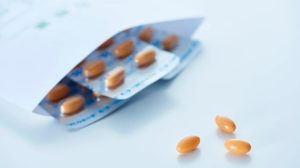Table of Contents
Packaging in the pharmaceutical sector has to meet many different demands. Aside from preserving the safety and efficacy of the medicines within, it must comply with complex legal requirements, and communicate important information clearly to patients and healthcare professionals.
In this article, we address common packaging challenges faced by the pharmaceutical sector, and ways they can be overcome.
How to Overcome The Common Packaging Challenges in Pharmaceutical Sector?
Regulatory Compliance

Regulatory standards form the backbone of pharmaceutical packaging. Authorities such as the Medicines and Healthcare products Regulatory Agency (MHRA) in the UK and the European Medicines Agency (EMA) in Europe set strict requirements around labelling, tamper-evident features and child-resistant closures.
In the United States, the Food and Drug Administration (FDA) enforces similar standards, including the Drug Supply Chain Security Act (DSCSA), which requires serialisation and traceability measures across the supply chain.
For companies distributing medicines across multiple jurisdictions, making sure packaging meets with each region’s differing regulations is a continual challenge.
One way to address this is to build flexibility into design so that labels and security features can be adapted for different markets.
Working with packaging providers who have experience in supplying products across international markets will further reduce the risk of non-compliance and delays.
Counterfeit Prevention
Counterfeit medicines continue to pose a global health risk, undermining patient trust and endangering lives.
Packaging is a critical line of defence, but it is not enough to simply adopt isolated security features.
A practical solution is to integrate layered anti-counterfeit measures – for example, combining tamper-proof closures with serialised barcodes and track-and-trace systems that allow each unit to be verified at every point in the supply chain.
Protecting Product Integrity
Many pharmaceutical products are highly sensitive to light, moisture and temperature flux. Without effective barriers, medicines can degrade before they reach patients.
An additional challenge is material compatibility. Certain packaging components can release “extractables” and “leachables” into the medicine, which may compromise stability, safety or effectiveness.
To address these risks, companies are turning to advanced packaging technologies such as UV-resistant plastics, moisture-blocking films and integrated desiccant systems.
Rigorous compatibility testing is also carried out to make sure no harmful substances migrate from packaging into the drug.
By working closely with packaging specialists and adopting validated materials, pharmaceutical businesses can protect product integrity throughout the supply chain.
Accessibility and Patient-centric Design
Packaging that is safe is not always user-friendly. Patients with reduced dexterity, impaired vision or limited strength may struggle to open containers or interpret small print. This can increase the risk of medication errors or reduce adherence to treatment.
Patient-centric design is now a priority across the sector. Approaches include closures that are both child-resistant and manageable for older adults and clear large-print labelling.
Supply Chain Reliability
The availability of packaging has a direct impact on the availability of medicines. Any disruption in supply can delay treatment for patients and create bottlenecks across the wider healthcare system.
Volatility in raw material costs, shipping delays or supplier limitations can all put pressure on pharmaceutical businesses.
Choosing the right packaging partner can reduce these risks. Suppliers that maintain robust stock levels, offer scalable production and provide rapid dispatch help pharmaceutical firms maintain continuity even when demand shifts unexpectedly.
Services such as in-house labelling also minimise the number of steps in the supply chain, making the process less vulnerable to disruption.
Balancing Sustainability with Safety
Sustainability is now a priority across industries, but in pharmaceuticals, packaging must protect medicines against contamination and degradation, while also meeting strict regulatory standards. This makes the shift to greener materials more complex than in other sectors.
Companies are exploring recyclable and lightweight options such as PET plastics, which offer durability and barrier protection while being widely recycled.
Biodegradable alternatives and reduced-material designs are also being developed. By working with packaging providers that invest in sustainable innovations, pharmaceutical firms will be well placed to adopt new packaging technologies as they enter the market.
Working Towards Solutions

The challenges facing pharmaceutical packaging are diverse, but they share a common thread: each has a practical pathway forward.
Regulatory complexity can be addressed through flexible designs and digital compliance tools, counterfeit risks reduced through layered protections, and product integrity through rigorous material testing.
For industry stakeholders contending with packaging challenges in the pharmaceutical sector, the focus is shifting from simply meeting minimum standards to adopting packaging strategies that strengthen resilience, improve patient experience and support global distribution.
Those who take this proactive approach will be best placed to respond as regulations tighten and patient expectations evolve.


